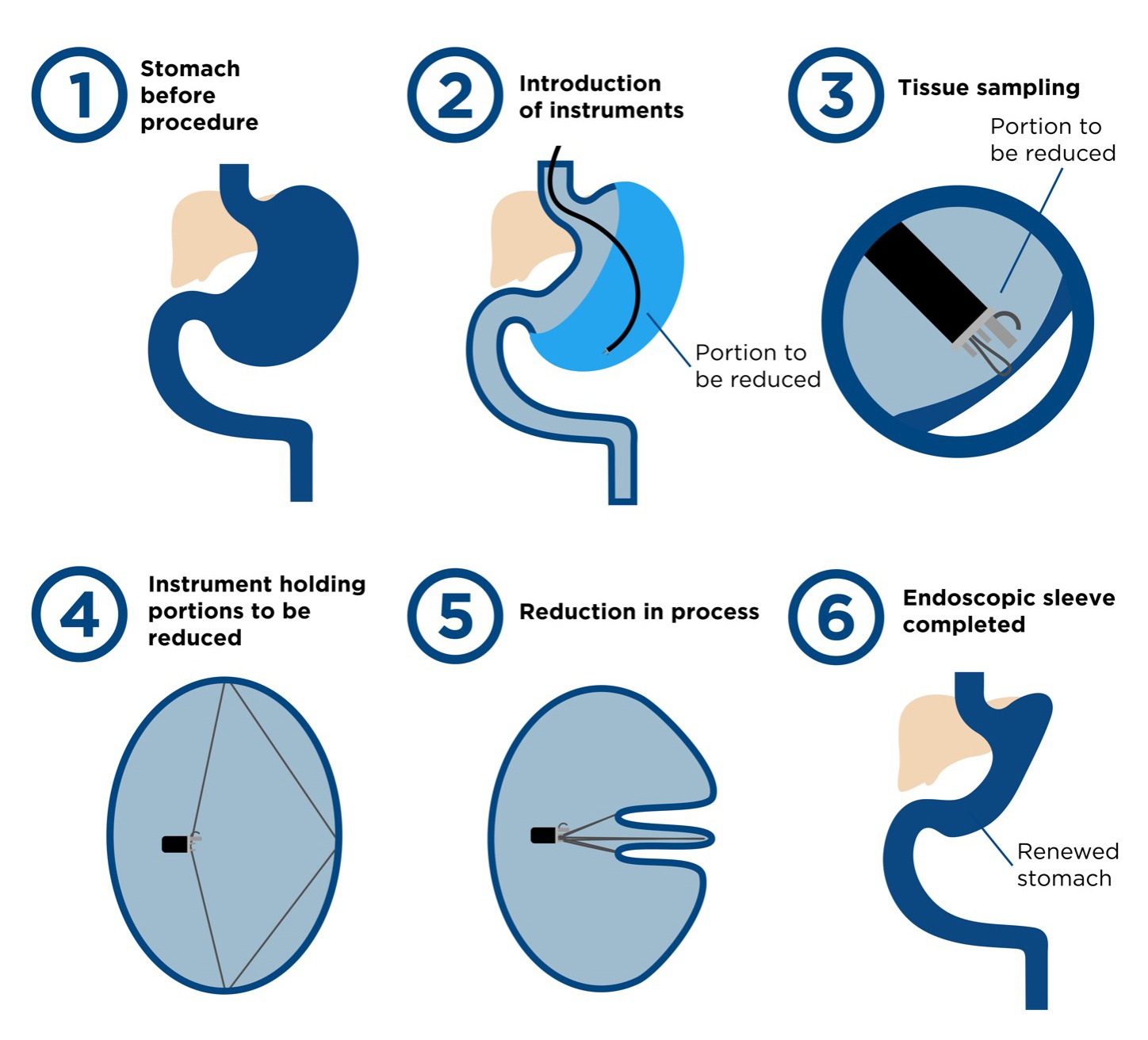The latest technology is allowing great results with no incisions

The Endosleeve
The Endosleeve is an endoscopic procedure similar to the gastric sleeve that reduces the size of the stomach by approximately 70% without the need for surgery, thus helping you reduce the amount of food you take per meal.
Why is an endosleeve beneficial for me?
● It will help you lose over 50% of your excess body weight in six months.
● It is an ambulatory procedure: meaning you will be discharged the same day.
● Proven to produce fewer complications compared to surgical weight-loss options.
Where is the procedure performed?
The endosleeve has been adopted worldwide, with procedures being performed all over the United States, Europe and now Mexico as we are offering the endosleeve for select patients here at Obesity Control Center.
Who is a candidate for an endosleeve?
● The endosleeve is excellent for patients with lower BMI than those traditionally required for surgical candidates. If your BMI is 27 to 39 kg/m2 this is an option worth considering.
● The endosleeve is great for patients looking to drop 15 to 20% of their total body weight.
● Ideal for those looking to avoid surgery.
What are the pros and cons of an endosleeve?
● Pros:
○ Does not involve surgery.
○ Comparatively safer than surgical options.
○ Produces predictable and sustained weight loss.
○ Helps control or cure baseline conditions such as diabetes, hypertension,
dyslipidemia, obstructive sleep apnea and osteoarthritis.
● Cons:
○ Weight loss is likely to be lower compared to undergoing bariatric surgery.
○ Only ideal for patients with lower BMI (27 – 39 kg/m2).

Graph showing that weight-loss attained with the endosleeve (ESG) is comparable to that achieved with lap-band (LAGB) at 18 months post-op (Reproduced from Alqahtani, A. Al-Darwish, A., Mahmoud, A. E., Algahtani, Y.A., & Elahmedi, M. (2019) Short-term outcomes of endoscopic sleeve gastroplasty in 1000 consecutive patients. Gastrointestinal Endoscopy, 89(6), 1132-1138. doi: 10.1016/ gie.2018.12.012).
